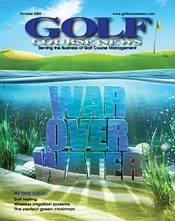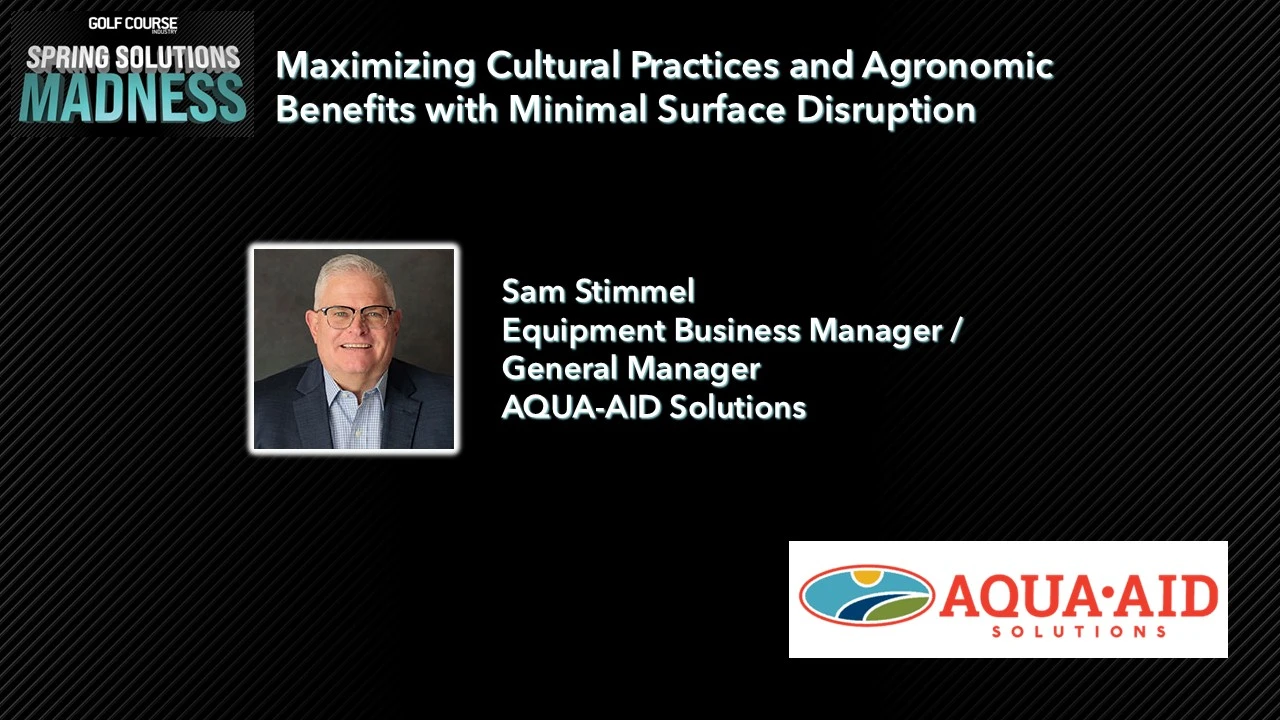In the 1930s, venerable golf course architect Alister Mackenzie wrote, "The
history of most golf clubs is that a committee is appointed, they make mistakes, and just as they are beginning to learn from their mistakes, they resign office and are replaced by others who make greater mistakes still, and so it goes on."
In other words, not much has changed during the last 70 years. While it’s inevitable green chairmen and their committees will continue to make mistakes, an astute golf course superintendent will recognize the most common missteps in advance and head them off. A survey conducted by the USGA Green Section staff found that while courses might vary and decades will pass, there’s a commonality about what makes a good green chairman and what makes a person in the position ineffective.
|
|
While the green committee has the responsibility to oversee the management of the golf course, it shouldn’t be involved in a course’s day-to-day management. Instead, it’s an advisory board making broad-based decisions about budget and policy. The green chairman organizes and conducts regular committee meetings and maintains a close relationship with the superintendent. A good green chairman, as suggested by the USGA Green Section:
• Understands the role of the superintendent and is familiar with his challenges – he’s an advocate for the superintendent;
• Is the liaison for the board of directors, members and the superintendent regarding golf course operations;
• Is up to date about golfers’ concerns, questions and comments about the course;
• Is involved with the golf schedule and how it impacts the maintenance calendar;
• Maintains regular contact with the superintendent to discuss course conditions and special projects;
• Employs a competent and progressive superintendent who should report directly to the green chairman;
• Assists the superintendent with the budget process and policy decisions; and
• Gives the superintendent the authority to close the course because of weather or turf conditions and prohibit the use of golf cars.
An effective chairman and committee, working with a competent superintendent, can make improvements and implement plans on a golf course that will be enjoyed by golfers for many years. On the other hand, an ineffective committee and superintendent can drag a course down, creating problems that will linger for a long time.
What it takes
David Fearis, CGCS, was a golf course superintendent for 28 years. A past president of the Golf Course Superintendents Association of America, Fearis is presently a turf and ornamental product specialist for Kansas City, Mo.-based PBI/Gordon Corp. He says the ideal green chairman is level headed, well liked and well known at his course.
|
|
"He should also have a passion for the golf course," he says. "The green chairman sets the stage for the board of directors and makes recommendations, but he is not the final decision-maker."
Tommy Witt, certified golf course superintendent of Northmoor Country Club in Highland Park, Ill., and GCSAA past president, says leadership is a key attribute of an effective green chairman.
"As author John Maxwell said, ‘All things rise and fall with leadership,’" Witt says. "The green chairman should be approachable and have good listening skills. Honesty and integrity are tremendously important, too. Ideally, this individual would have previous committee service to understand the history of the club and the vision for the future. The green chairman should seek the position for the right reasons – what is best for the club in the short and long term. He should be a visionary, not someone who represents a segment of the membership or has a personal agenda. Finally, this person should use good judgment and have the confidence and strength to make decisions that are right for the club."
Mike Heacock worked for American Golf Corp. for more than 17 years as a superintendent and then finally as vice president of agronomy. Presently, with more than 32 years experience in the industry, he’s vice president of maintenance for Pacific Golf Management in Japan. The company has more than 93 properties in its portfolio.
"My first green chairman taught me that my responsibility to the committee was to thoroughly research my proposals so the club could make an informed business decision," says the former president of the southern California superintendent’s association. "That sounds simple, but it’s not done that way at many clubs. This green chairman was the first to teach me to view my profession as a business."
Desired traits
So, what are the elements of a good green chairman and committee? The following describes good and bad characteristics. It’s important that the superintendent understand these dynamics to become more effective and successful.
1. An effective green chairman puts in the time. The green chairman must educate himself about turfgrass management and learn the challenges at his course. This involves attending seminars, visiting other courses and reading trade magazines. He should spend time with the superintendent and develop an honest relationship with him. A chairman who doesn’t make the time commitment generally isn’t capable of making informed decisions.
"The green chairman must be willing to listen and learn," Witt says. "At least once in his tenure, he should get up at 4:30 a.m., go to the club and see what it takes to prepare a golf course. Understandably, many green chairmen have no idea. They live and work in an entirely different environment. They most likely have never considered the superintendent’s challenges of working with a limited staff and budget; dealing with uncontrollable elements such as heat, drought, flooding and freezing; and the fact that they have to satisfy the expectations of hundreds of members."
Fearis says a green chairman should attend the annual Golf Industry Show at least once.
"It is an eye-opener, and it helps him understand the job of a professional golf course superintendent," he explains.
2. A poor green chairman wants his place in history. Woe to the superintendent who finds himself with a green chairman who has a large ego; someone who wants to leave their mark on the course. This can lead to odd and impractical design changes, wasting labor and money, and adversely affecting the course. Worse, going along with these projects can hurt a superintendent’s credibility. To avoid this pitfall, green chairmen and their committees should listen to and use competent consultants and develop a master plan for long-range improvements.
3. Don’t be a micromanager. Having a basic understanding of golf course management requires a steep learning curve. Unfortunately, sometimes a little bit of knowledge can be dangerous. A superintendent shouldn’t have his every move scrutinized. A green chairman who begins directing maintenance staff personnel can only cause confusion and chaos. There must be a clear understanding that the superintendent is the expert and will set his own priorities for maintenance issues.
At one time, Heacock was the superintendent at a club in Southern California. The green chairman there was a top Los Angeles attorney and accomplished amateur golfer. This individual didn’t believe frost could cause turf problems.
"One Saturday, he ignored my urgings to stay off the course and proceeded to play with his foursome," Heacock says. "There was heavy frost on the course, but I wasn’t about to tackle my green chairman on the first tee. I spotted him at lunch in the clubhouse a few days later and asked him to walk the first fairway with me. I showed him the now black footprints his foursome had left. He looked at me and said he had no idea this would happen. He became my biggest supporter, which was great because he was far and away the most powerful and influential man in the club."
On the other hand, sometimes a superintendent can learn from a green chairman who presents a different point of view.
"At this same course, we had a wet winter and often closed the course due to soggy conditions," Heacock says. "On one such day, the next green chairman asked to walk part of the course with me. It was raining, and we splashed water with every step. He asked me if we were doing any damage, and I answered that a lot of traffic would harm the course. He offered that not many golfers would play in these conditions, and maybe the course could be opened for anyone who wanted to walk. He couldn’t understand how a few golfers could damage greens in the rain. He had a fresh perspective and was absolutely right. He taught me to question common folklore and think about our ‘customers’ – the members."
4. Don’t be a figurehead. The green chairman should be a voting member of the board of directors. If not, he has no leverage in the outcome of important and controversial issues. He also will be a more persuasive advocate for the golf course.
5. Realize that golfers place unrealistic demands on course conditions. While most golfers want "member-guest" conditions all the time, this is seldom a realistic goal because of agronomic and budgetary restrictions. The level of maintenance should provide playing conditions agreeable to the majority of the membership while placing agronomically reasonable demands on the course.
"Everyone wants good quality conditions, but many golfers don’t know what they really are," Fearis says. "Developing a set of maintenance guidelines for the golf course will clarify maintenance priorities and keep the entire organization moving in the right direction. Of course, weather and other situations can affect this plan, so also be flexible."
6. Tough decisions must be made. Being a green chairman isn’t a popularity contest. It’s impossible to please every member. Although the goal of the superintendent is to avoid disruptions to play, sometimes solutions to agronomic problems require just that. Badly deteriorated bunkers might need reconstruction, an antiquated irrigation system might need an expensive replacement, and playability problems and poor turf conditions might mean tree removal. There are many undesirable consequences for not following through with the necessary corrective programs. The popular band-aid approach is rarely effective. This wastes money and perpetuates problems. The green chairman needs to do what’s right for the course and its future in the most cost-effective manner possible. As the old saying goes, "It seems there is never enough money to do the project right the first time, yet there always seems to be enough money to do it over."
7. The green committee should represent a cross section of members. Large committees can be ineffective because it’s difficult to stay on track. There’s too much discussion and too little decision-making. A good size is five to seven members. Unbalanced committees sometimes fail to consider how their actions will affect golfers of different abilities. The green committee should consist of golfers of both genders and all abilities. This offers varied perspectives and opens lines of communication with other golfers.
8. Unfortunately, tenure is short. Many of the most serious mistakes made by green committees simply are due to a lack of tenure. Just when it seems a green chairman has acquired enough knowledge to be a valuable resource, his term expires. Unfortunately, this also wastes much of the superintendent’s time because he has put a tremendous amount of energy into educating the chairman and committee members. Frequent turnover makes continuity extremely difficult. Ideally, the chairman and committee would serve for at least three years. One excellent means of guaranteeing continuity and experience is for the club’s immediate past president to become the newest member of the committee. Soon the committee will consist of individuals who are familiar with the entire club operation.
9. Everyone must communicate effectively. Regular communication is one thing, but effective communication is quite another. The chairman and committee members change on a regular basis, so the committee that hired the superintendent probably won’t be the one he answers to a few years later. Because individuals often volunteer to effect change, it’s likely the goals of the committee will change according to its makeup. Few superintendents consider themselves salespeople, but that’s a large part of their job. Successful superintendents must sell their management programs and philosophies to the chairman, committee and golfers they answer to. This takes a lot of written and oral communication. Chairmen and committees who take an arrogant approach and think golfers and members will take their word for it, frequently experience strong opposition and a lack of support.
The position of green chairman is anything but a no-brainer. The job should be filled only by an individual with exceptional leadership skills, an interest and willingness to learn new vocabulary, the mental toughness necessary to make hard decisions and the time to do the job right.
Not many people meet these criteria. As a result, most green committees are led poorly and, in many cases, do more harm than good in spite of their best intentions. The unfortunate truth is that the lack of good leadership might be the biggest problem many clubs face.
Be proactive
Witt says change is inevitable. During a superintendent’s tenure, green chairmen and committees will come and go. The key is to manage that change.
"Very few superintendents get in serious trouble because of turf issues," he says. "They would be well advised to pay significant attention to building people, communication and relationship skills. It’s just too big a part of our job to ignore. Learn the green chairman’s personality. How does he prefer to do business, letters, voice-mail, e-mail, meetings, digital photos? Whenever possible, offer several options for the proposals you present to him. Help the chairman look good. Make him a hero."
Another critical factor is establishing credibility with the club.
"A superintendent is going to run into a green chairman he may not like, but find a way to get along because it will make life much easier," Witt says. "Taking the high road in these relationships will be the most advantageous in the long run. It’s vital to take the time to develop relationships. How can the chairman, committee or members support you if they don’t know who you are? The constant turnover only heightens the challenges of effective communication and positive relationships. This doesn’t happen overnight, but the time and effort the superintendent invests makes a tremendous difference in his success." GCN
David Wolff is a freelance writer based in Watertown, Wis. He can be reached at dgwolff@charter.net. Wolff is green chairman at Watertown Country Club.

Explore the October 2004 Issue
Check out more from this issue and find your next story to read.
Latest from Golf Course Industry
- Tartan Talks 105: Nathan Crace and Todd Quitno
- Disease Discussion 24: Let the turf talk to you
- From the publisher’s pen: Foggy intrigue
- USGA releases Water Conservation Playbook
- Vilamoura Golf courses awarded GEO Certified status
- GCSAA’s Health in Action 5K/2K reaches fundraising goal
- Landscapes Golf Management to participate in data analyzation initiative
- Reel Turf Techs: Carl Michael







